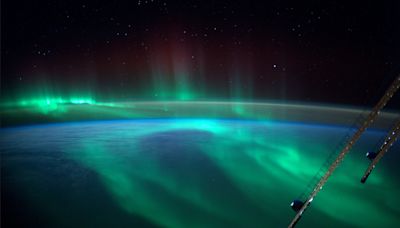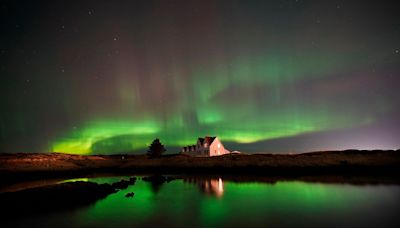Search results
The aurora is an indicator of the current geomagnetic storm conditions and provides situational awareness for a number of technologies. The aurora directly impacts HF radio communication and GPS/GNSS satellite navigation.
An aurora (pl. aurorae or auroras), also commonly known as the northern lights (aurora borealis) or southern lights (aurora australis), is a natural light display in Earth's sky, predominantly seen in high-latitude regions (around the Arctic and Antarctic). Auroras display dynamic patterns of brilliant lights that appear as curtains, rays ...
Feb 9, 2024 · The northern lights, or the aurora borealis, are beautiful dancing ribbons of light that have captivated people for millennia.
The Aurora Borealis (Northern Lights) and Aurora Australis (Southern Lights) are the result of electrons colliding with the upper reaches of Earth’s atmosphere. (Protons cause faint and diffuse aurora, usually not easily visible to the human eye.)
1 day ago · When and where can you see the northern and southern lights also known as the aurora? This page provides a prediction of the aurora’s visibility tonight and tomorrow night in the charts below.
Jun 10, 2021 · Nothing can ruin our joy in the aurora borealis, or northern lights, those ribbons of blue, green and violet light that cascade from the sky. Not even knowing for sure what causes them....
Oct 19, 2023 · An aurora is a natural light display that shimmers in the sky. Blue, red, yellow, green, and orange lights shift gently and change shape like softly blowing curtains. Auroras are only visible at night, and usually only appear in lower polar regions.



